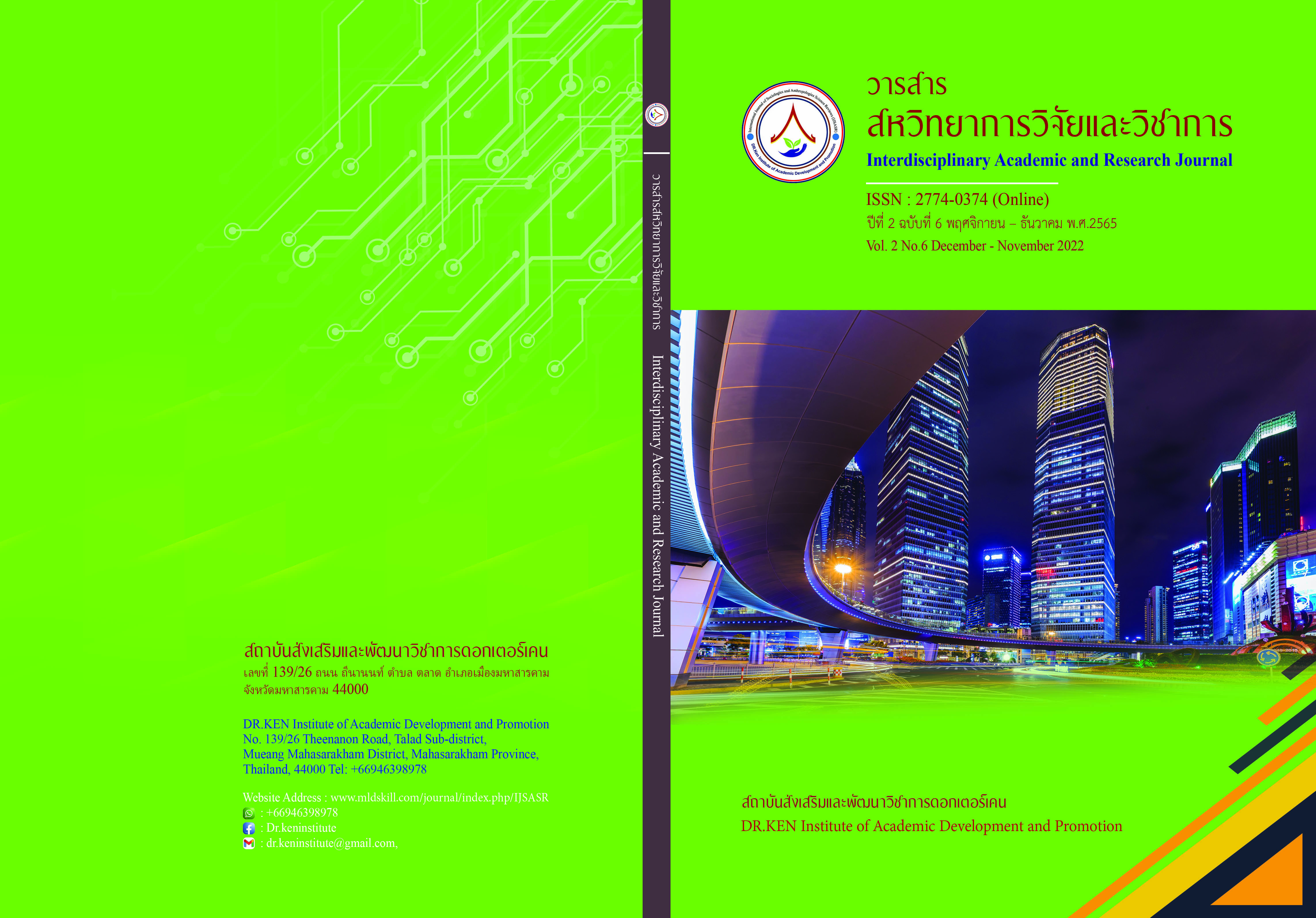The Cotton Bag Products Designs of the Silk and Cotton Weaving Group, Ban Ngua Ba, Nguaba Subdistrict, Wapi Pathum District, Maha Sarakham Province
DOI:
https://doi.org/10.14456/iarj.2022.175Keywords:
Product Design; , Bag Product; , Hand-Woven Cotton ProductAbstract
Ban Ngua Ba Silk and Cotton Weaving Group, Ngua Ba Sub-district, Wapi Pathum District, Maha Sarakham Province were established in 2001, however, another handicraft group that wants to earn extra income to earn income for the family, The aim is to use leisure time to benefit and to revive the existing weaving wisdom. Thus, this research aims (1) to study the approach and process of designing cotton bags Silk and Cotton Weaving Group. (2) to design and develop cotton products for the silk and cotton weaving group. This research was held at Ban Ngua Ba, Nguaba Subdistrict, Wapi Pathum District Maha Sarakham Province. The research process started with in-depth data collection from 3 product design experts, combined with 3 other data collection methods: (1) Observation: Observing the activities of Ban Ngua Ba silk and cotton weaving group to see the work of the group and use it as information for product design, observe the problems and needs of the Ban Ngua silk and cotton weaving group, and in the design of cotton products, observe the bag products available in the Ban Ngua silk and cotton weaving group. And observe the target audience who prefers to buy cotton bags and see what shapes are popular from trusted fashion websites. (2) Informal interview: In the fieldwork, the researcher used the informal interview form to be used as basic information to be used in the design of cotton products of the silk weaving group and Ban Ngua Ba cotton weaving group, an informal interview conducted on the history of the Ban Ngua Ba silk and cotton weaving group, the background of making hand-woven cotton products, and the demands on the design of hand-woven cotton products. And (3) Surveys a survey of damaged hand-woven cotton products of the silk and cotton weaving group of Ban Ngua Ba and explores the shapes and forms of cotton bags in the market that are sold to solve the problem of Product design. The data is then analyzed and synthesized to create a product design specification. Once the draft has been received, all 3 experts will choose the corresponding design to be developed as a prototype. And take the prototype to survey product satisfaction through target groups of teenagers and working people through various online channels. The results found that 9 pieces of design and production of cotton bags in a total of 3 shapes; consisting of 3 tote-shaped bags, 3 baguette-shaped bags, and 3 hobo-shaped bags, used as monochromatic and contrasting combinations. However, the guidelines for designing cotton bags that are in line with consumer needs, and it can be a way to generate additional income for the Ban Ngua Ba silk and cotton weaving community, which uses a participatory approach according to the research objectives.
References
กนวรรณ นีรพงษ์. (2564). สมาชิกกลุ่มทอผ้าไหมและผ้าฝ้าย บ้านงัวบา. สัมภาษณ์. 28 ธันวาคมแ 2564.
จักรพันธ์ สุระประเสริฐ (2560). แนวทางในการพัฒนาศักยภาพการออกแบบเครื่องแต่กาย สตรีจากผ้าฝ้าย: กรณีศึกษาชุมชนทอผ้าฝ้ายบ้านเฮี้ย อำเภอปัว จังหวัดน่าน. SUTHIPARITHAT. 31 (97), 157-168.
จุฑามาศ ดอนอ่อนเบ้า และ จิรวัฒน์ พิระสันต์ (2563).นวัตกรรมการพัฒนาผ้าฝ้ายทอมืออัตลักษณ์ท้องถิ่น จังหวัดเลย. วารสารศิลปกรรมศาสตร์ มหาวิทยาลัยขอนแก่น. 12 (2), 22-42.
บัวรี ชาวปี. (2564). ประธานกลุ่มทอผ้าไหมและผ้าฝ้าย บ้านงัวบา. สัมภาษณ์. 28 ธันวาคมแ 2564.
พรเทพ เทพสงวน. (2553). ออกแบบผลิตภัณฑ์อุตสาหกรรม. คณะวิทยาศาสตร์และเทคโนโลยี: มหาวิทยาลัยเทคโนโลยีราชมงคลกรุงเทพ.
พรรณณิษา เมืองผุย. (2551) ปัจจัยที่มีอิทธิผลต่อพฤติกรรมการซื้อผลิตภัณฑ์กระเป๋ายี่ห้อชั้นนำ ของผู้บริโภคในเขตกรุงเทพมหานคร.กรุงเทพฯ: มหาวิทยาลัยรามคำแหง. DOI : https://doi.nrct.go.th/ListDoi/listDetail?Resolve_DOI=10.14457/RU.the.2008.234
พีนาลิน สาริยา. (2549). การออกแบบลวดลาย. กรุงเทพฯ : โอ.เอส.พริ้นติ้งเฮ้าส์
สมหทัย ปั่นสี. (2554). ออกแบบผลิตภัณฑ์อุตสาหกรรม. คณะวิทยาศาสตร์และเทคโนโลยี: มหาวิทยาลัยเทคโนโลยีราชมงคลกรุงเทพ.
Downloads
Published
How to Cite
Issue
Section
License
Copyright (c) 2022 พัชรีภรณ์ ญาตินิยม, นัฐณรงค์ กวีพงศธร, สิรินภา ขจรโมทย์

This work is licensed under a Creative Commons Attribution-NonCommercial-NoDerivatives 4.0 International License.
Copyright on any article in the Interdisciplinary Academic and Research Journal is retained by the author(s) under the under the Creative Commons Attribution-NonCommercial-NoDerivatives 4.0 International License. Permission to use text, content, images, etc. of publication. Any user to read, download, copy, distribute, print, search, or link to the full texts of articles, crawl them for indexing, pass them as data to software, or use them for any other lawful purpose. But do not use it for commercial use or with the intent to benefit any business.
















.png)


